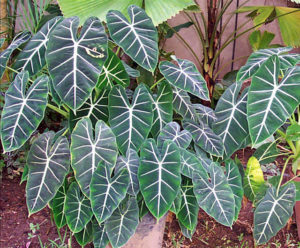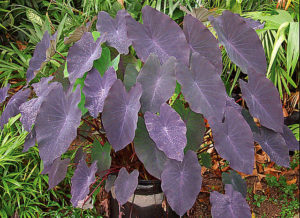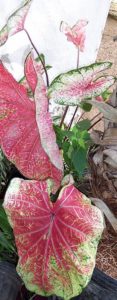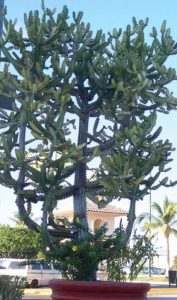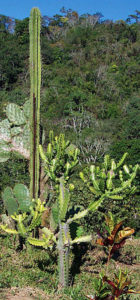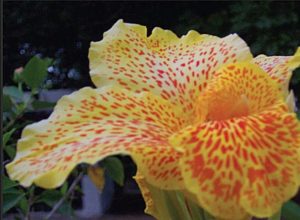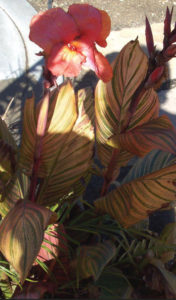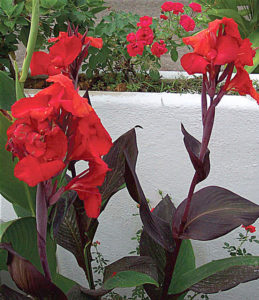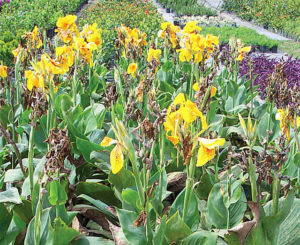Three beautiful options for your tropical garden in Mexico are the caladium, candleabra cactus and canna lily.
Caladium (C. x hortelanum)
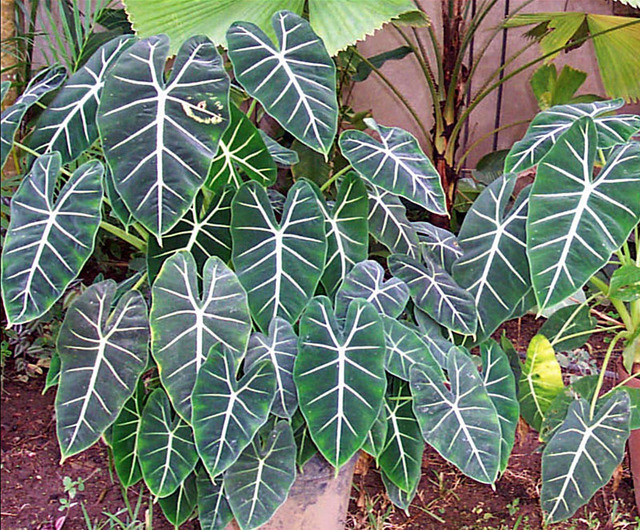
Family: Araceae
Alternate Name: Geraniums of the South
Use: The caladium is a bedding or container plant grown for its colorful foliage. There is some debate about its some seven to seventeen varieties, their names and origins, but all are beautiful. Their arrow-shaped leaves show colorful patterns or blotches.
Flowers: Its flowers bloom in a spadix surrounded by a yellow-green spathe.
Cultivation: Found in the wild from sea level to over 3000 feet elevation, this understory herb has adapted well to landscape and indoor cultivation. Native to tropical climates, these plants are cold sensitive. They are shade plants, although part sun will do, and they prefer a well-drained soil kept moist. For best show, fertilize them regularly.
Propagation: Caladium can be propagated from seed or from tubers. Clean, disinfect, and let the tubers dry, storing them for at least six weeks prior to replanting.
Note: All parts of the caladium are poisonous, especially if eaten. Causes mild skin irritation. Deer resistant.
Candleabra Cactus (Euphorbia ingens triloba)
Family: Euphorbiacea
Use: The ornamental candleabra growth form makes this a striking specimen for any dry landscape. It has been used as a living fence due to its sharp spines, which discourage penetration.
Other Euphorbias are also grown as houseplants in cooler climates.
Flowers: The cactus’ flowers are small and yellow, clustered in cup-like structures. Fruit is borne on a stalk extending from the flower.
Cultivation: The candleabra cactus grows in arid conditions to a height of almost 40 feet, branching from a single trunk. It will grow in hotter, more humid climates as well, but grows more slowly in those environments. Water it sparingly.
Propagation: This cactus can be propagated from seed or cuttings. Take cuttings during the dry season, let them dry for ten days prior to planting in cactus mix soil. The seeds stay viable for many years.
Note: All parts of the plant are poisonous, and the milky sap is irritating upon contact.
Canna Lily (Canna x generalis)
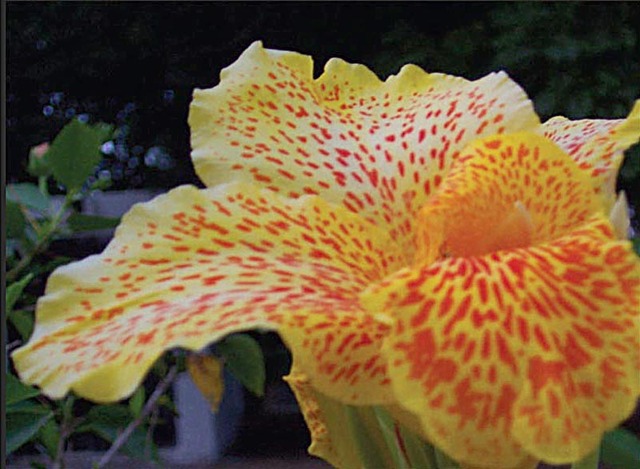
Family: Liliaceae
Alternate Names: Indian Shot (for the hard, round seeds)
Use: The canna lily is a mid-height plant for garden beds, and is best in massed display. These add a tropical look to any garden with their large dark leaves and bright flowers. There are more than sixty species, but only a few are commonly grown.
Flowers: This plant produces clear pure bright colors in a wide range, as well as speckled and mottled designs. The leaves are also attractive – large and deep colored in green, bronze, or reddish shades, or striped, as in the “Pretoria.” The ten-foot tall C. iridiflora carries large flowers on arching stems.
Cultivation: The canna lily tolerates almost any good garden soil, and full sun to shade. It requires regular watering in cooler climates, and should be cut back to the ground prior to the cold season’s onset. A barrier to spreading roots may be necessary. Cut back old flowering stems for best appearance.
Propagation: This plant can be propagated by division of the rhizomes, or by seed.

